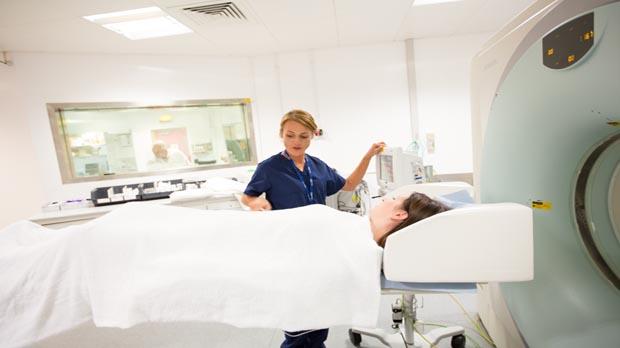
Around 1 in 5 people diagnosed with cancer in the UK take part in a clinical trial.
This study looked at the reliability of testing for human papilloma virus (HPV) using a vaginal swab or a urine sample.
HPV is a common virus. There are many types and some can cause changes to cells in the cervix called cervical pre cancer. If they aren’t treated, these abnormal cells might develop into cervical cancer.
Women usually have a cervical smear test at the GP to check for abnormal cells. Testing for HPV is another and more sensitive way to see which women are at risk of developing cervical pre cancer or cancer.
When this study was done, testing for HPV was being looked at as the primary screening test for cervical cancer. Other research also showed it might be possible to screen women for HPV using a vaginal swab or a urine sample. These are tests that women can do at home by themselves. The researchers in this study wanted to see how well these tests worked in a large number of women.
The aim of the study was to confirm that HPV testing using vaginal swabs and urine samples was a reliable way of finding abnormal changes in the cervix.
The study team found that testing for HPV in vaginal samples collected by the women was as reliable at finding abnormal changes as the smear tests.
Women living in Dumfries and Galloway were invited to join the study when they were due to have their routine cervical smear.
5, 318 women aged between 20 and 60 years old took part. The average age was 43. None of them had been diagnosed with abnormal cells in the past. Just under 6 out of 10 (66%) of women under 23 had been vaccinated against certain types of HPV.
In this study, everyone had a smear test, which was also tested for HPV. They were also asked to:
The researchers tested all the samples for HPV. They found HPV in:
Women were referred to have a test called a colposcopy if they:
A total of 222 women had this test.
The researchers looked at the abnormal changes in the cervix (cervical pre cancer, which is also called  or CIN). They looked at the number of women who had CIN2 or more. They found 130 women had these changes.
or CIN). They looked at the number of women who had CIN2 or more. They found 130 women had these changes.
Of the samples that tested positive for pre cancer (CIN2 or more), they found HPV in:
Other findings were:
The study team concluded that HPV testing using vaginal samples works as well as cervical smear testing at finding abnormal changes in the cervix. So they say that vaginal sampling should be considered as a primary screening tool for cervical cancer.
We have based this summary on information from the research team. The information they sent us has been reviewed by independent specialists ( ) and published in a medical journal. The figures we quote above were provided by the trial team who did the research. We have not analysed the data ourselves.
) and published in a medical journal. The figures we quote above were provided by the trial team who did the research. We have not analysed the data ourselves.
Please note: In order to join a trial you will need to discuss it with your doctor, unless otherwise specified.
Dr Grazyna Stanczuk
NIHR Clinical Research Network: Cancer
NHS Dumfries and Galloway
If you have questions about the trial please contact our cancer information nurses
Freephone 0808 800 4040

Around 1 in 5 people diagnosed with cancer in the UK take part in a clinical trial.